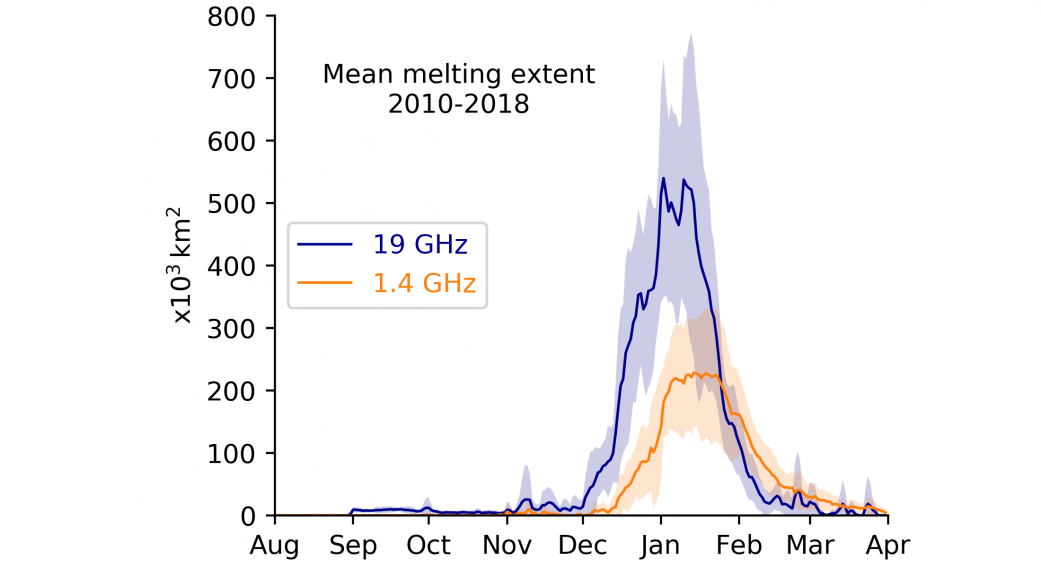Monitoring of the melt season contributes to characterizing the seasonal and interannual climatic variations in Antarctica and is important for assessing the future stability of the ice sheet.
Due to its 1.4 GHz frequency, SMOS can penetrate much deeper into the ice compared to other microwave imagers operating at 19 GHz: this implies that joint use of data from the two frequencies may provide interesting complementary information on melt occurrences. The team adapted an algorithm developed for 19 GHz to the 1.4 GHz: preliminary results demonstrate that the combined use of different frequencies may allow to determine if a melt event was limited to the surface of the snowpack or if it was intense enough to inject water at depths, hence supporting our understanding of melt processes in Antarctica.
Full results of the study can be found in: M. Leduc-Leballeur, G. Picard, G. Macelloni, A. Mialon, Y.H. Kerr (2020). Melt in Antarctica derived from Soil Moisture and Ocean Salinity (SMOS) observations at L band, The Cryosphere, 14, 539–548 (https://doi.org/10.5194/tc-14-539-2020).
Featured image: Daily mean melting extent in Antarctica from April 2010 to March 2018 detected at 1.4 GHz (orange) and 19 GHz (blue).
Read also SMOS supports investigations of Antarctica’s ice-sheet internal temperature, from the same research team.

